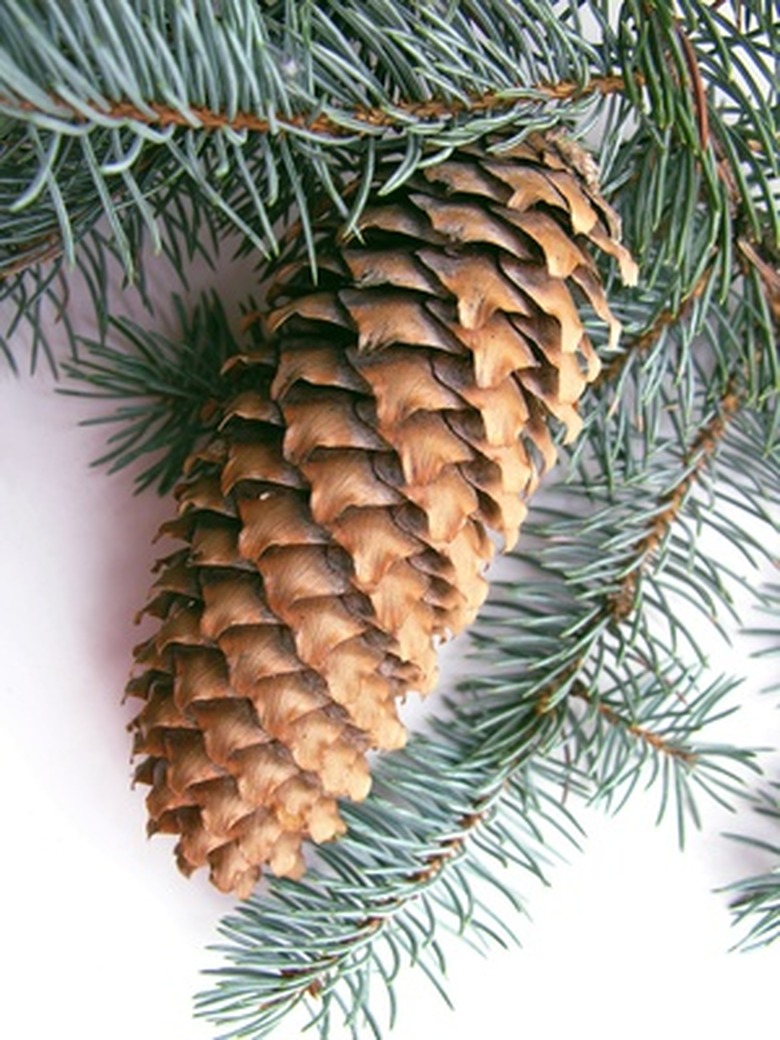Norway Spruce Varieties
The Norway spruce (Picea abies) is the most widely grown landscape spruce. It is commonly used as a street tree, Christmas tree and a windbreak. This is due to its disease resistance, adaptability to different climates and fast growth. The Norway spruce is native to Europe, but is widely grown in North America and Canada. There are different sizes and forms of Norway spruce trees. There are a number of dwarf shrub varieties, which are naturally-occurring mutations.
Standard Norway Spruce
This Norway spruce species is conical in shape and will reach 40 to 80 feet tall, depending on the climate. It will become 30 feet wide over time. This spruce begins as a densely branched tree and becomes more opened branched as it matures. The branches and needles are medium green and stiff, but the tips have a weeping appearance. As the tree ages, the gray-brown bark becomes scaly and flakes off, revealing orange coloration underneath. The long narrow cones are light green when young, becoming brown and open with age. Picea abies "Cupressina" is a popular columnar form that is used as a hedge or wind-break. It will eventually reach 30 to 40 feet tall and 8 to 10 feet wide. These Norway spruces are hardy to USDA Zone 3.
- The Norway spruce (Picea abies) is the most widely grown landscape spruce.
- This Norway spruce species is conical in shape and will reach 40 to 80 feet tall, depending on the climate.
Dwarf Norway Spruce
There are many forms of dwarf Norway spruce. The most popular is the Bird's Nest spruce (Picea abies "Nidiformis"). The center of the shrub is indented, which creates the appearance of a bird's nest. It has horizontal branching and a spreading habit. Nest spruce is 3 feet high and 4 to 5 feet wide. Picea abies "Little gem" is a smaller version of the nest spruce that is only 2 feet tall and 2 feet wide. Another dwarf Norway spruce is Picea abies "Pigmaea." This is a slower growing form with upright branches and a conical shape. It is slightly larger, at 4 to 5 feet tall and wide at maturity. These varieties are hardy to USDA Zone 3. Picea abies "Pumila" has short, soft, dark green needles. It is 3 to 4 feet wide and equally as tall. There is a variety of this shrub with blue-green needles (Picea abies "Pumila Glauca"), and a darker, slightly taller variety (Picea abies "Nigra"). All three Pumila varieties need protection from afternoon sun and are hardy to USDA Zone 4. Picea abies "Maxwelli," a very small Norway spruce, is suitable for rock gardens and bonsai. This one is only a foot tall and will spread to 3 feet wide over a period of 20 years. Maxwell spruce is hardy to USDA Zone 4.
- There are many forms of dwarf Norway spruce.
- Picea abies "Little gem" is a smaller version of the nest spruce that is only 2 feet tall and 2 feet wide.
Weeping Norway Spruce
There are two weeping forms of Norway spruce. The most common is Picea abies "Pendula." This tree has an upright central leader with very weeping branches. The mature height varies considerably. from 20 to 60 feet. It is only 3 to 5 feet wide at maturity. Another weeping form is Picea abies "Inversa." This one can take on many irregular shapes. It tends to grow wider than it is tall. It can also be trained and shaped into a more tree-like form. The mature height if not pruned is 15 to 30 feet. These spruce are hardy to USDA Zone 3.
- There are two weeping forms of Norway spruce.
- The mature height if not pruned is 15 to 30 feet.
